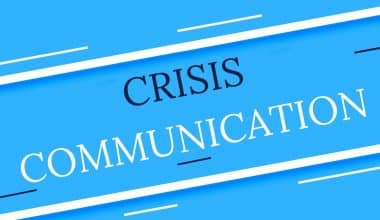Have you been a part of teams where everyone contributes and you all work in unison? Do you always play to your team’s strengths, or are there times when things just don’t work out?
Teamwork is essential for completing projects, and sports teams are examples of how many players working together can achieve much more than one player alone. Everyone on the team plays a different role according to their strengths, and by helping and encouraging one another, they can make inspiring things happen.
We frequently hear the phrase “good team player” even in the workplace. But in a business context, what does it actually mean? What do team leaders expect of their members, and how can you strengthen your team’s performance?
In this article, we demonstrate the qualities of a good team player and provide some guides and tips on contributing more in the future.
What Word Means Working Together?
Working together means to “cooperate,” “act with another or others,” or “act in compliance.
Working together refers to the collective effort of a group to accomplish a task or reach a common objective most effectively and efficiently as possible.
For everyone to understand their role within the team, teams must be able to effectively use resources, such as playing fields or meeting spaces, scheduled times for planning, coaching or supervision from superiors, support from the organization, etc.
Furthermore, it refers to every situation in which a group of people collaborates to accomplish a common objective involving teamwork.
Lastly, these settings include formal work teams in an industrial organization, sports teams, students working on a project in class, and the healthcare system.
What is the Importance of Working Together?
In almost every industry, success at work depends on effective teamwork. Working together with clients, coworkers, and management at work can help you finish daily tasks quickly and consistently meet project goals.
Whether you are new to your field or have experience, you will discover that feeling like a valued team member can increase your overall job satisfaction, assist in the formation of long-lasting professional connections, and enhance your skills.
You will benefit if you keep teamwork at the core of your workplace culture. Here are just a few remarkable advantages of teamwork at work:
What are the 10 Benefits of Working Together?
#1. Working together increases productivity.
Teams with high levels of teamwork had a 25% increase in profitability. Teamwork reduces friction and delays by enabling better and more frequent real-time communication between all participants. All of this results in an output of a higher caliber.
#2. Greater Synergy
Teams are assembled with members from various backgrounds, knowledge levels, and skill sets. Together, this diversity has the potential to produce something more than the sum of its parts.
As members learn from each other’s failures and successes, teamwork can increase cooperation among participants.
#3. It Fosters Creativity
A workplace where employees are open-minded about sharing their ideas, suggestions, and concerns comes out with the best creative outputs.
This sets a path for greater dialogue on new ideas and different perspectives—the result is continuous innovation!
#4. It brings out the best in employees.
Working together helps to develop relationships, which leads to community building and improves mood.
Therefore, overall success is guaranteed if everyone works enthusiastically, is willing to assist others, and goes above and beyond the call of duty.
#5. Working together allows for flexibility.
Everyone on the team understands their roles and responsibilities and is willing to step up if one person is unable to finish a particular task.
Therefore, Due to the team’s increased flexibility and capacity for adaptation, new challenges can be overcome with ease.
#6. It removes barriers
Teammates use their varied learnings to come up with solutions and help each other through difficulties.
#7. Working together raises standards.
Teams that function well together give their customers better customer service. A cohesive team provides a superior customer experience by reducing departmental fighting and finger-pointing.
So when it comes to a swift resolution of their inquiries, customers love a unified service experience, and solid team ties offer all-encompassing solutions.
#8. It allows for fresh ideas and innovation.
Teams are better able to discuss and exchange various points of view on a situation when they work together. This provides an opportunity to examine a problem from various perspectives, increasing the number of potential solutions.
Additionally, members of a team who work together are more receptive to the opinions of others and open to learning about other cultures.
#9. Working together helps to Build Trust
Being able to trust a teammate creates a sense of safety that encourages teammates to be open and supportive of one another.
Teammate trust encourages open communication, which may in turn increase confidence in the business and management.
#10. Working together helps in conflict resolution:
Teamwork and team bonding can help to resolve conflicts and attract and retain the best talent in a knowledge-centric economy.
What is an Example of Working Together?
Understanding company culture helps determine the type of teamwork skills needed. Review the list of examples of teamwork in the workplace below to better understand the traits of effective teamwork.
#1. Effective Communication
Being an effective communicator entails having the capacity to articulate your thoughts succinctly and clearly so that others can quickly grasp your point of view.
You should be able to convey this verbally, in writing, and through nonverbal cues.
It’s crucial to pay attention to both what you say and how you say it when working in a group.
By exercising caution, you can be sure that your team members will receive your message correctly.
Examples of effective communication in the workplace include:
- Informing: For your team to complete projects effectively and accurately, you might need to communicate information to them.
- Teaching: When working in a group, you must demonstrate how to complete tasks or suggest alternate approaches.
- Guidance: This allows members to lead one another through tasks.
- Research: The sharing of significant information and learning through inquiry and discussion reflects careful consideration and the professional development that results from cooperation.
- Guidance: Team members can support one another by offering advice and making recommendations for high-quality work and effective productivity.
#2. Problem-solving
You can complete daily tasks more easily if you use your critical thinking abilities at work. When used in teamwork, problem-solving abilities will motivate you to mediate any disputes your group encounters and reach an agreement that is best for both the group as a whole and the business.
Good teamwork problem-solving techniques include the following:
- Negotiation: To reach a solution that is acceptable to all parties, negotiation calls for a conversation between individuals or groups with divergent viewpoints. The exchange of ideas makes problem-solving easier and advances teamwork understanding.
- Definition: Teamwork requires members to communicate their ideas clearly to other group members and to work toward a clearly defined goal.
- Management: Team members must frequently keep an eye on their behavior as well as that of those around them to effectively manage a team. Teams that are self-governing and possess a wide range of transferable skills can work well without external management.
#3. Reliability
It’s critical to establish yourself as a dependable employee who consistently delivers and is available to assist other team members.
Being a trustworthy team member fosters trust in the working environment by demonstrating to other team members that they can rely on you.
Here are some ways to demonstrate dependability and teamwork:
- Participation: Adding to the overall dynamics of the team is necessary to be an active team member. Your involvement in discussions, tasks, or team-building exercises facilitated by management demonstrates your commitment to your workplace and sector.
- Inspiration: Teamwork relies on individual strengths, encouraging risk-taking, and celebrating victories to inspire others.
- Commitment: Committing to assisting others in the accomplishment of a group objective fosters strong relationships and demonstrates your enthusiasm for your field.
#4. Respect
Others will feel valued if you demonstrate a mutual understanding and consideration of their thoughts, emotions, and contributions to the team’s success.
By showing genuine concern, maintaining eye contact, and being approachable, you acknowledge others, create a positive work environment, and develop a variety of soft skills necessary for professional success.
Activities for respect on a team include the following:
- Listen: Active listening skills are essential for successful teamwork.
- Empathy: Creating a positive atmosphere for teamwork through understanding others’ perspectives, welcoming differing perspectives, and providing positive feedback.
- Reflection: Validate team members by reflecting on their words and expressing genuine interest.
#5. Creativity
Team collaboration and effective teamwork can lead to innovative ideas, methodologies, and products.
Through effective teamwork and team collaboration, you can work to further develop your growth mindset. A few examples are:
- Development: Teamwork is a process of learning and developing skills to work together effectively.
- Sharing: The sharing of ideas and responsibilities is one of the most advantageous aspects of teamwork.
What are the Principles of Working Together?
Here are the five fundamental principles of working together:
#1. Team members need to fit into roles.
A good leader is aware of what is expected of each team member and is well-versed in the specifics of each role. This aids in their selection of the best candidates for open positions.
Therefore, leaders must exercise caution both during and after the hiring process if they are to put together a team of people who are well-suited for clearly defined roles:
• Hire skillful employees. Find someone who meets the job demands, fits the organizational culture, and is a team player who can collaborate with colleagues and clients.
• Utilize each team member’s strengths. Leaders should focus on their strengths to help drive the team and company forward.
#2. Members of the team should exchange knowledge.
40% of professionals believe that collaboration and teamwork are crucial components of great workplaces.
Therefore, team members should collaborate and share expertise to create broad strategies that benefit the whole team.
To apply this principle:
• Hold routine team meetings. Team leaders should plan meeting agendas and share them in advance to help team members come prepared and make the meeting more productive.
#3. Team members should get support.
High-functioning teams are supported by colleagues and managers without hostility or distrust.
To apply this principle
• Master conflict resolution. Team members must understand how to use conflict to their benefit.
Staff Development: Meaning, Solutions, Ideas & Academy
Team Morale: Best Tips to Boost Morale & Increase Productivity
COMMUNICATIONS DEGREE: Meaning, Types, Requirements & What You Do With It?






